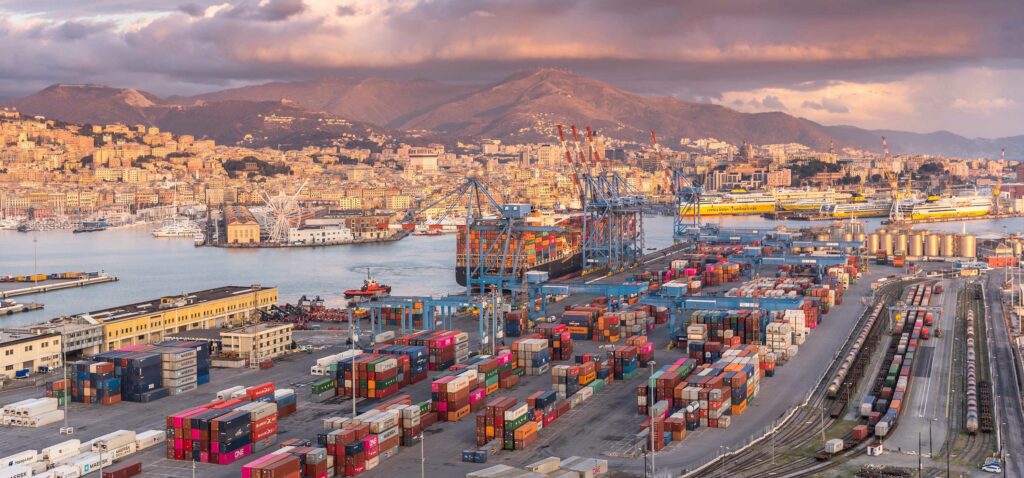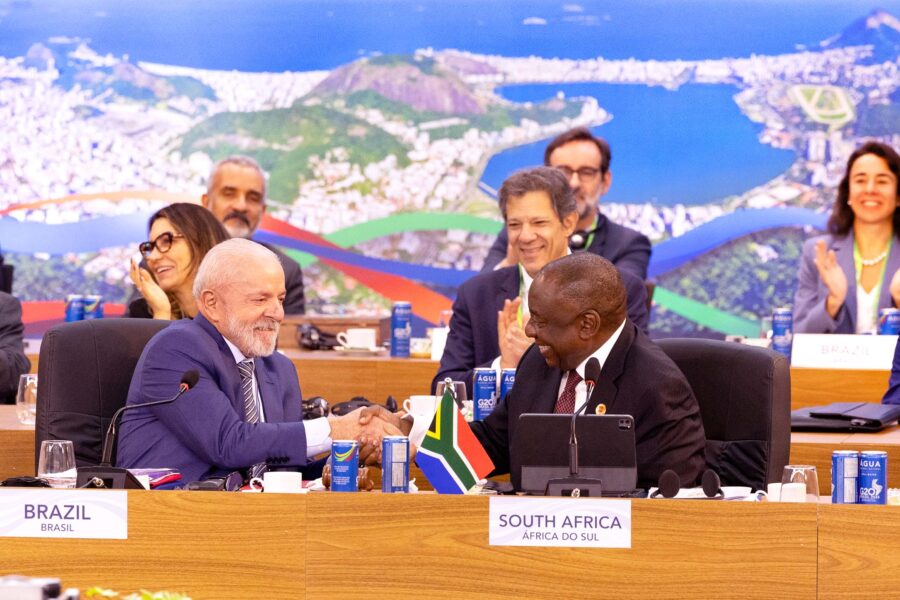How to curb negative international spillovers?
Rich countries show no signs of decoupling their economies from the harmful environmental and social impacts they generate abroad. This must urgently change if we’re to achieve the SDGs and limit temperature rise, but requires bold international action
Climate — Global

The Sustainable Development Goals (SDGs) adopted by all UN Member States in 2015 are a global responsibility. Reducing child and forced labor, stopping deforestation, and many other SDG outcomes require deep international collaboration. Yet, too often, policies and actions undertaken in rich countries only account for their impacts domestically – even as they generate negative environmental and social impacts abroad. These are known as “negative spillover effects.”
In an October 2022 speech to the Centre for Global Cooperation, US Secretary of the Treasury Janet Yellen noted that “emerging markets and developing countries are often most acutely affected both by global shocks and by spillovers from the policies of advanced countries.”
Rich countries are responsible for the bulk of negative spillover effects, especially those embodied in the consumption of goods and services and unsustainable supply chains. This is the key finding of the 2021 Global Commons Stewardship Index, a joint publication of the University of Tokyo, the UN SDSN, and Yale University. The SDSN has also been documenting these effects for many years in its International Spillover Index as part of its Sustainable Development Report, and in its European work.
We find, for example, that 40% of greenhouse gases (GHGs) emitted by the European Union are in fact generated abroad. The EU’s consumption is responsible for 17% of tropical deforestation worldwide, according to WWF. SDSN and the University of Sydney have further documented how, each year, close to 400 workers die in the production of textiles used by EU citizens. Biofuel mandates in Europe and other major economies have accelerated tropical deforestation and land displacement in other parts of the world. Growing demand for raw materials, notably for renewable energy and other technologies in the EU, fuels GHG emissions and forced labor in other parts of the world. And the shipment of waste to countries and regions that cannot manage it has profound ecological and health impacts abroad.
There are no signs of structural decoupling between economic prosperity and negative spillovers. While many – including the US, Japan, France, and Germany – have managed to decrease their domestic CO2 emissions in absolute and per capita terms compared with the early 2000s (though still too slowly to meet Agenda 2030 and Paris targets), there is currently no evidence of a structural decrease in CO2 emissions from their imports. Overall, high-income countries were responsible for more than 80% of cumulative imported CO₂ emissions between 2010 and 2018. This is one more pillar of evidence that, when it comes to climate change, rich countries have a historical responsibility to act and to lead international efforts.
Figure 1: Rich countries were responsible for more than 80% of cumulative imported CO₂ emissions from 2010 to 2018
Source: Sachs, J., Lafortune, G., Kroll, C., Fuller, G., Woelm, F. (2022). From Crisis to Sustainable Development: the SDGs as Roadmap to 2030 and Beyond. Sustainable Development Report 2022. Cambridge: Cambridge University Press. Based on Lenzen et al. (2020)
What rich countries must do now
To curb these negative spillover effects and better support countries in their global responsibility to achieve the SDGs and climate goals, rich countries need to act on three major levers.
1. Action at home
First, domestic tools may help generate a level playing field and provide the right incentives. Due diligence regulations that make companies accountable for impacts generated throughout their supply chains, national targets, and strong data systems at national, industry, and company levels can help. In April 2022, Sweden announced its intention to become the first country to set a target on consumption-based carbon emissions.
Public management practices and procedures, particularly public procurement and regulatory impact assessments, should also be leveraged to prevent unintended consequences of domestic policies. If well designed, import bans – like the one recently adopted by the EU to tackle imported deforestation, or existing policies in Canada and the US to ban products made using forced labor – and border adjustment mechanisms may also help.
However, domestic instruments – especially import bans and tariffs – must be part of a larger package of efforts to support investment in cleaner production systems and digital technologies in developing countries. Otherwise, domestic border measures may be perceived by the rest of the world as hidden protectionism, which could slow or stop bold efforts to achieve the SDGs and climate action in developing countries. In the same speech, Secretary Yellen rightly emphasized that “we must also help developing countries transition their economies away from carbon-intensive energy sources and expand access to clean energy. […] If the global community benefits from investments in climate, then the global community should help bear the cost.”
2. SDG diplomacy
The second policy lever is therefore SDG diplomacy. This involves two pillars:
- international financing for sustainable development
- technical and research collaboration
Rich countries must lead on developing a global plan for financing the SDGs that covers official development assistance, blended finance instruments, specific climate mitigation and adaptation funding, and safeguarding the global commons. Countries (with and alongside multilateral development banks (MDBs) and public development banks) must also deepen their technical cooperation and share know-how to better understand policies, investments, technologies, and pathways that can support SDG transformations in developing countries.
Unfortunately, rich countries have failed to deliver on many of their existing commitments. In 2021, only five OECD Development Assistance Committee member countries (Denmark, Germany, Luxembourg, Norway, and Sweden) achieved the target of dedicating 0.7% of gross national income to official development assistance. And things may get worse because of increased budget pressure and shifting policy priorities, especially in Europe. Rich countries have also fallen short in delivering on their commitment to mobilizing USD 100 billion each year by 2020 to mitigate further rises in temperature and help poorer countries adapt to climate change.
Rich countries (especially those in the G7 and G20) have an obligation to implement the call made by UN Secretary-General António Guterres in September 2022 for an “SDG Stimulus” to address the limited fiscal space in low and middle-income countries. It could build on positive moves made at COP26 in November 2021, including pledges by the US and the EU to slash methane emissions and the EU’s commitment of €1 billion to protect world forests. It would also complement new forms of North–South Partnerships, such as the new Partnership for a Just Transition for South Africa.
Large infrastructure projects led by the EU (Global Gateway), China (Belt and Road), and the US (Build Back Better World) should work together to support cleaner energy and production systems globally. The G20 can also support international governance reforms, notably via the World Trade Organization. It is also crucial to reinforce the role of MDBs (such as the World Bank) and the IMF to better connect access to financing and sustainable development policies. Finally, global taxation reforms should also help curb profit shifting and unfair tax competition so that governments have more revenues to invest in SDG transformations.
3. Responsible consumption
The third lever involves responsible consumption. The war in Ukraine and energy crises in Europe and other regions have rebalanced public discussion and awareness, which was until recently overwhelmingly dominated by “production side” measures (including targets on renewable energy, or electric car production) towards sustainable consumption and energy efficiency. This was emphasized in France by President Macron’s call in September 2022 for increased “sobriété énergétique” (energy savings), followed by an action plan by the French government. Transitioning towards healthier diets, lower food loss, less waste, and the circular economy (including by recycling electronic waste) can help reduce rich nations’ global footprint and its impact on food and mineral supply chains, among others. Supporting R&D and innovations in energy storage but also in the manufacturing and design of renewable energy infrastructure (including solar panels) are key priorities for curbing spillovers embodied in the consumption of raw materials and other supply chains.
Conclusion
Deglobalization and protectionism should not be the main response to address unsustainable supply chains. A sound and ambitious global response to curbing international spillovers should build on partnerships and on concerted efforts, led by rich countries and the G20, to improve living standards in developing countries and invest in clean technologies and infrastructure needed to achieve the SDGs and climate goals. November’s COP27 in Egypt, the 2023 SDG Summit, and 2024 Summit of the Future (both in New York) must provide a strong, clear impetus for SDG actions and financing that will help curb negative spillovers and make the international trade system more sustainable.





